Are you experiencing persistent or debilitating back pain? Well, you are not alone. In fact, nearly 31 million U.S. Citizens experience low-back pain at any given moment, and back pain is the leading cause of individuals seeking chiropractic treatment. Back pain may range from a slight nuisance to your daily activities to crippling chronic pain. The good news is that a chiropractic doctor can provide pain relief.
While an injury may trigger back pain, many individuals are unsure as to what causes intense spikes in pain. Evaluation from a chiropractor can lead to a greater understanding of what is causing your pain and what options you have for treatment relative to your unique situation. After just one chiropractic adjustment, you may see a reduction of spasms, reduced muscle and spine pain, and an improved range of motion.
Chiropractors often use a multidisciplinary approach to treating issues such as severe back pain. For example, your chiropractor may show you exercises for you to complete at home to strengthen and stabilize your back so that you will be less likely to experience back pain in the future. Additionally, your chiropractor may recommend other treatment methods to incorporate into your individualized care plan, such as massage, physical therapy, hot and cold therapy, dry needling, nutritional counseling, and more.
Here’s How to Fix Severe Back Pain
To fix a patient’s severe back pain, first, your chiropractic doctor will have to discuss what is causing the pain. There are several different types of back pain, but there are three leading causes: discogenic, joint-related, and muscle-related.
1. Discogenic Back Pain
Discogenic back pain is caused when the discs found in the back between the vertebrae are compromised. These discs may tear, bulge, herniate, extrude, and may irritate nerves that are located nearby. Discogenic back pain is common and is associated with activities that increase pressure on the intervertebral discs. With discogenic back pain, simple actions such as bending, sitting, sneezing, and coughing may exacerbate pain. For example, patients experiencing discogenic pain will almost always experience pain when making a forward bending motion.
Furthermore, many individuals who suffer from sciatica experience this type of back pain due to a herniated disc in the lower back. When a herniated disc places pressure on the sciatic nerve, a patient will often feel radiating numbness, tingling, burning, and pain from hip to foot.
After evaluation and discovering that a patient is experiencing discogenic back pain, your chiropractor will create an individualized plan that focuses on preventing herniations from worsening, providing pain relief, and stretching the surrounding muscles along the spine to aid in the prevention of disc herniation occurring down the line.
2. Joint-Related Back Pain
Joint-related back pain will occur when spinal joints become restricted, degenerate, or become adhesive. Each vertebra has two sets of facet joints in the spine, which provide mobility and support. As with all joints, these facet joints are composed of cartilage that can become thinned and worn and restrict normal motion.
When it comes to joint-related back pain, when the bone attempts to adjust to having less support, inflammation and osteoarthritis may occur. Additionally, bone spurs may grow as the body tries to compensate for lost cartilage. These bone spurs may pinch nerves and further lead to back pain.
When we see a patient experiencing joint-related back pain, our mission is to reduce pain and help support the joint through treatment that can include exercise to strengthen surrounding muscles and deep tissue work. In addition, if you are experiencing this type of back pain, it is crucial to try to maintain proper posture to maintain spinal alignment and prevent future issues.
3. Muscle-Related Back Pain
Muscle-related back pain occurs when joints and discs emit signals to muscles to tense to help protect weakened areas. This type of pain may also be referred to as myalgia pain. This type of back pain may also occur from poor posture, repetitive tasks, and strain. For example, back muscle strains may result from excessive weightlifting, improper lifting techniques, poor posture, or repetitive motions such as golfing. Additionally, this type of pain is frequently seen in car accident victims.
If the pain you are experiencing is due to muscle-related back pain, the pain will be localized to one area and will not radiate. Instead, you may experience spasms, tenderness, and muscle stiffness. This type of pain can come on quickly and usually lessens with rest.
When we determine a patient is experiencing muscle-related back pain, our mission is to reduce pain and relax the surrounding muscles to prevent further pain. This may be accomplished through various methods, including laser therapy, dry needling, deep tissue work, and more.
As can be seen, treatment options for severe back pain vary from case to case, as each patient will have different needs. The treatment you will need will depend on the cause of your back pain. Our goal is to ensure that our patients leave our office in less pain than they came in with during their first visit. After your pain is treated, we will work to show you have to prevent back pain in the future and how to stabilize your back. We love helping our patients recover quicker and helping them to stay clear of pain in the future.
If you are experiencing severe back pain, call Atlas Total Health Chiropractic at (866) 668-0108 or contact us online. We can’t wait to help relieve your pain and help you to get back to the things you love.


